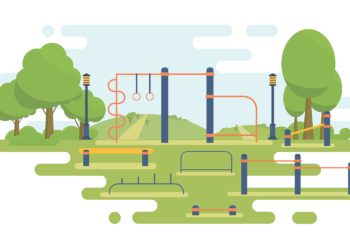Protective netting is usually the last thing a facilities manager might think about, and sometimes the first thing they’ll regret omitting. Containment netting is not an active component of play, but it protects spectators and property from the hazards of flying objects during the game. Scoreboards, lights, cars, windows and cheering fans are all at risk once the action starts. But before you go out and buy skid loads of bulk netting, there are several factors to consider for an effective and worthy purchase
Keep the future in mind and anticipate other possible uses for the space. Sports facilities can adapt to changing needs and trends. What is soccer today could be lacrosse tomorrow, so be sure to choose a netting material that is suitable for a wide range of activities.
Visibility is a main concern when it comes to installing nets between spectators and the field. For higher transparency, go with black netting. White or other colors will reflect light, obscuring vision.
If you are outfitting an indoor space, make sure the netting is fire retardant, also referred to as “FR”. FR netting should be certified to meet requirements for flame spread and smoke, commonly tested under NFPA-701 or ASTM E84 standards. The fire marshal may ask you for proof of compliance so always ask your dealer for FR certification before you buy.
So you’ve picked your netting and it is FR compliant; now you just need to put it up. It sounds easy, but every facility is different and the netting will have to be adjusted to fit the architecture of the space for complete and even coverage. It is usually a good idea to find a netting supplier that can provide design and installation services to ensure a perfect fit.
Once your netting is installed it should provide years of reliable protection. When to replace the netting can be determined by a number of factors. Like all synthetics, netting degrades over time from exposure to ultraviolet light, water, chemicals, dirt and normal use, so netting that is installed outdoors will have a much shorter life than netting installed indoors. Check hardware and attachment points for rust and regularly inspect for fraying of rope or netting material. If you feel the net has been compromised, contact the supplier and ask for advice on repair or replacement.
When the time finally comes to replace the netting, you’ll likely want a direct replacement. To speed up that process and to prevent having to start over, keep any and all information regarding your purchase in a safe place for easy reference. A reputable supplier should be able to take that information or even look up your previous order and duplicate it.
By Peter Greeley, InCord Marketing. For more information call 860-531-1089 or email peterg@incord.com.










